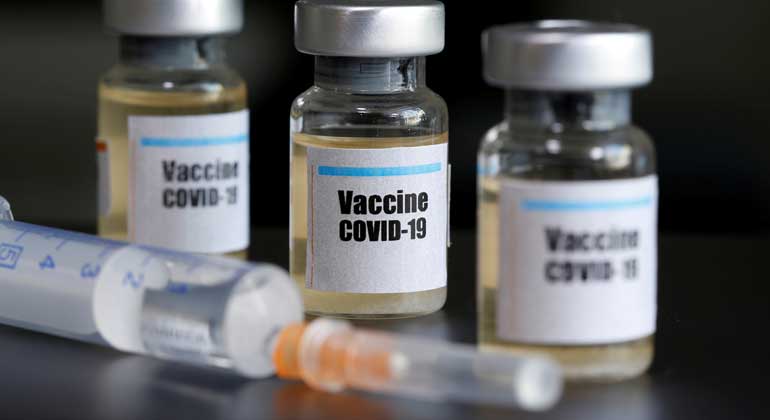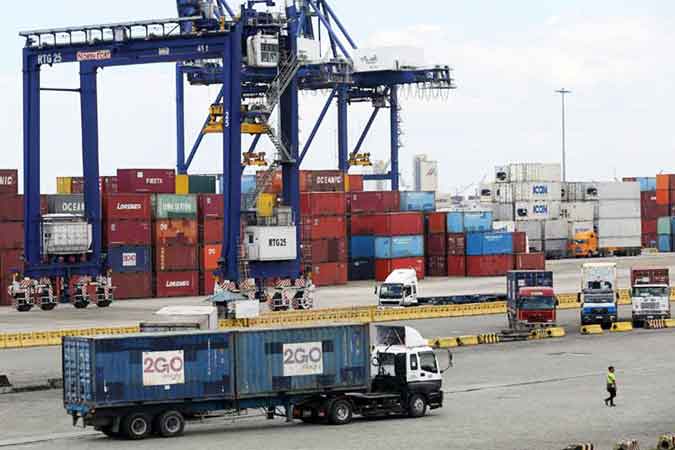Christmas is fast approaching and yet, the realities of celebrating the holidays with a pandemic can be difficult for most Filipino families today. Despite this, the desire to enjoy our usual holiday activities and observe cherished local traditions remain strong in many of us. After all, the true spirit of Christmas is about hope, joy, and the eternal anticipation of good tidings.
Uplifting the lives of Filipinos and rekindling Christmas cheer in everyone’s hearts underscore this year’s Wonderful World of Globe (WWG). “Our aim is to recreate the Christmas we all love. We take to heart our role in renewing the spirit of connectedness within the Filipino family especially at a time when most of us stay within the confines of our homes. It is also a great opportunity for each of us to do more for others and continue spreading cheer to everyone we can reach,” said Ernest Cu, Globe President and CEO.
As quick, easy and flexible internet access became the new essential, this year’s WWG is the perfect time to launch the revolutionary product offer of Globe. Surf4ALL is a first-of-its-kind, fully convergent data offer that knows no boundaries across Globe brands. This promo gives you high GBs for all sites and a shareable GB allocation that is seamlessly accessible to up to 4 users or devices. Now, you can share data with Globe Prepaid, Globe Postpaid, Globe Platinum, Globe At Home Prepaid WiFi, and even TM.
Available through the GlobeOne app, Surf4ALL has 2 promos – Surf4ALL99, which gives you 9GB of shareable data, and Surf4ALL249, with 20GB shared access (15GB + 5GB limited-time bonus data). Both offers are valid for 7 days. It’s the only data product of its kind in the Philippines today to ensure no one is left behind when it comes to connectivity. This is the true universal data offer for all Globe customers which makes it possible to be constantly connected regardless of brand, device, and location.
The combination of Globe’s ever-improving network and the innovative Surf4ALL product gives Filipinos the ability to really make the holidays richer and better, by giving them access to daily essentials and services they will find both useful and enjoyable throughout the season.
As online shopping continues to surge in popularity, 917Ventures, the largest corporate incubator in the Philippines, partnered with Puregold to create PureGo, an online grocery shopping platform that delivers groceries at one’s doorstep with a next day delivery promise, using multiple payment options including GCash.
Recreate Togetherness
Enjoying various content such as video, music, games, and sports can enhance family bonding so Globe partnered with Riot for special data offers for League of Legends: Wild Rift the mobile version of the highly-popular League of Legends.
And, with the continuous expansion of Globe’s 5G service, more exciting forms of innovation can be expected for Globe customers. One of which is coming from the partnership of Globe with Niantic. As the first Southeast Asian telco member of the Niantic Planet-Scale AR Alliance, Globe will drive bigger and better immersive gaming experiences powered by Niantic’s advanced AR real-world platform that will push the boundaries of what can be experienced in a Niantic game with 5G technology. Niantic is an AR company, inspiring people to explore the world together.
Another interesting 5G-enabled service that brings entertainment to a whole new level is from Globe’s official partnership with YouTube VR. This will enable users to watch and explore VR content in-app through the affordable yet effective Globe VR cardboard. This further enhances the customers’ online entertainment experience and online learning at home.
Through a new partnership with HBO GO, Globe offers a raft of award-winning entertainment to the digital Filipino. With HBO GO, Globe customers can watch thousands of hours of shows and movies any time anywhere using their connected device. Filipinos can stream or download HBO Originals, HBO Asia Originals, Korean and Chinese dramas, Hollywood blockbusters, hundreds of hours of kids and family content and more, including Sam Mendes’ war film 1917, Spider-Man: Far From Home starring Tom Holland, Christopher Nolan’s The Dark Knight trilogy and Cartoon Network’s We Bare Bears: The Movie.
Globe also joined hands with Kumu, a Pinoy-centered live streaming platform, which is home of local and global user-generated Pinoy lifestyle content, and digital content partners like GKNB (Game Ka Na Ba?), a gamified FYE (For Your Entertainment) focused on celebrity streams, talk shows, variety content and MYXPH for music. Kumu will also be adding game streaming channels into their mix as part of their offerings on the platform.
Recreate Gift-Giving
What is Christmas without presents? Gift-giving is a tradition that goes back to the wise men that visited the nativity. And while everyone loves presents from family and friends, some of the best gifts come when people share their blessings with those they may not know well but who need help.
To help vulnerable communities during the pandemic, Globe Platinum has partnered with World Vision to create the #ForFutureHeroes program. It consists of virtual experiences in collaboration with BGC Arts Center, Electric Studio, and others that allow Globe Platinum customers to pursue their passions at home while making an impact on others. Participation in every activity is matched by Globe Platinum with World Vision school kits filled with DepEd approved learning modules and supplies, so the children of Baseco Compound, Manila can continue their education.
On top of this, Globe Platinum customers have been delighting frontliners, who have worked so tirelessly to keep Filipinos safe all these months, through the Thank-A-Hero program. Apart from sending them treats from Auntie Anne’s, Coco, The Cookie Bar, and JCo Donuts, Globe Platinum is also preparing a Noche Buena feast for our frontliners, to thank those who will be hard at work all throughout Christmas Eve, keeping Filipinos safe.
Recognizing the pressing demand of educators for a fast, reliable, and affordable internet connection, Globe At Home initiated WiFi2Teach which supports the DepEd’s Distance Learning program through the donation of Globe Prepaid WiFi modems. Modems have been donated to the DepEd to equip selected public school teachers and ensure that education remains unhampered. The program continues as it now works towards raising funds to provide free WiFi modems for public school students. In partnership with Ayala Foundation, for every Globe At Home Prepaid Wifi sold, P100 will be donated to help fund internet connectivity of selected public school students at home.
To give small and medium enterprises the much-needed boost, Globe myBusiness’ Gift Local campaign encourages everyone to patronize local products for their Christmas gift-giving.
GCash brings to life our beloved Christmas traditions with ChristMAS KAYA with GCASH, where celebrations and gift giving are made possible thru innovations like GCash Send Aguinaldo, enabling users to send digital gift envelopes as aguinaldos to their inaanaks and pamangkins, and even gifting insurance thru the app’s GInsure service. In the same spirit of giving and bayanihan, our customers may also donate to typhoon victims using GCash and their Globe Rewards points.
GLife, the newest GCash app feature, likewise, provides more gift and handaan options across different brands and e-commerce platforms, ranging from Lazada, Puregold, DataBlitz, Purego, Boozy, Goldilocks, Goama Games, and more.
It is indeed ‘Merry GCash!’ this Christmas, as GCash is also giving up to 30 million pesos worth of prizes just by using the app. Leading up to a few days to Christmas, consumers can get gifts just by buying load, or using GCredit to pay when they shop on their favorite online platforms. They will also get a chance to win a gift of their choice in the grand raffle.
Recreate Local Traditions
In the past, many Filipino families would look forward to the well-loved tradition on Christmas Day of watching the annual Metro Manila Film Festival which showcases local filmmakers and artists. This year, Globe and GMovies has partnered with the MMFF and UPSTREAM to recreate the MMFF tradition and bring this year’s nominated films online to Filipino homes around the nation and all over the world.
WWG also banners Filipino talents supported by Globe, celebrating the athletic achievements of such stars as 12-time 8-division boxing world champion and global icon Manny Pacquiao, Tennis child prodigy and Australian Open doubles champion Alex Eala, PH rep to FIBA 3X3 World Tour, Manila Chooks TM Team, ONE Championship’s martial arts stable Team Lakay. Globe also supports a roster of amazing local music artists and local greats with tremendous fan bases like December Avenue, Ben&Ben, SB19, The Juans, and Donnalyn Bartolome.
“We are looking forward to these exciting events that Globe has lined up for year-end and for 2021. Our commitment to our customers remains as we usher in a digital Philippines in the near future. Thank you for the support and for being with us in this journey.” said Jaime Augusto Zobel de Ayala, Chairman of Globe.
Globe believes that with the people’s collective energy and ingenuity, everyone can still make wonderful memories this Christmas and help see them through a new and better normal.
Globe is a signatory to the United Nations Global Compact and has committed to implement sustainability principles hinged on four pillars including One Digital Nation, Care for the Environment, Care for People and Positive Societal Impact. Globe is actively supporting 10 UN Sustainable Development Goals
For more information about Globe, visit www.globe.com.ph




